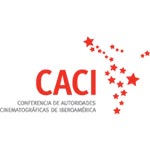 “Nuestro objetivo final es nada menos que lograr la integración del cine latinoamericano.
Así de simple, y así de desmesurado”.
“Nuestro objetivo final es nada menos que lograr la integración del cine latinoamericano.
Así de simple, y así de desmesurado”.
Gabriel García Márquez
Presidente (1927-2014)


-
Denuncias en Bichos de siete cabezas
Esta película cuenta la historia de Neto, un estudiante (interpretado por Rodrigo Santoro, en su primer largometraje), quien tiene profundos problemas de comunicación con sus padres y se encuentra, como muchos adolescentes de su edad, desubicado y rebelde. Con su grupo de amigos se reúne para salir, y también para fumar. Un día es sorprendido por su padre al dejar un cigarro de marihuana en la bolsa de su chamarra. El padre reacciona agresivamente y ante su incapacidad por entenderlo, le envía a un hospital para forzarlo a rehabilitarse. De esta forma Neto acaba experimentando la violencia existente en las instituciones de salud mental brasileñas. Sistema que desde hace 100 años cumple con “eficiencia” la función de vigilar y sancionar los casos de pequeños “desvíos” de conducta, aquellos que no ameritan una sanción legal. Descubriendo así, la violencia en los métodos y el abuso en la aplicación de medicamentos, utilizados comúnmente para el control de los internos. Con una estética apegada a situaciones reales, Bicho de siete cabezas habla por una parte, de la intolerancia y la incomunicación en el seno de una familia de clase media, y por otra, de los mecanismos de represión existentes en la sociedad brasileña.
Bicho de siete cabezas es un filme de ficción inspirado en el libro Canto de los malditos del escritor Austregésilo Carrano Bueno. Escrito en los años setenta, esta historia es un relato autobiográfico en el que Carrano cuenta su tragedia personal, en la cual fue internado en uno de esos hospitales psiquiátricos al descubrirse que fumaba marihuana. La obra de Carrano es una crónica personal que denuncia con extrema lucidez, y a pesar de todo, el sufrimiento, las monstruosidades del sistema psiquiátrico brasileño y la hipocresía de la sociedad brasileña ante el consumo de drogas.
La historia fácilmente se adapta a nuestros días, ya que muy poco se ha hecho por un cambio, y aún hoy es extremadamente común que las familias internen a sus hijos por problemas de “adicción”.
Actualmente, el escritor, es militante de un movimiento contra la situación de los hospitales psiquiátricos. En su más reciente libro, Las hijas de la noche, aborda el universo del tráfico de drogas, homosexualismo, prostitución y corrupción policial.
Una de las características más fuertes de esta película en su lenguaje documental. El filme está siempre procurando causar una sensación en la que el espectador este observando un acontecimiento cotidiano, banal, factible de suceder. Simultáneamente, la cámara se mueve como un espía de los acontecimientos, captando estos con gran espontaneidad.
Esa sensación de realidad fue buscada desde el guión. Neto, el personaje central, es un adolescente común, un joven con un mundo interior intenso y con dificultades para expresarse.
La preparación de actores comandada por Laís Bodansky y Sergio Penna procuró desarrollar un tono intimista para todo el elenco. Por eso, la característica más clara de Neto es la timidez. De la misma forma, el trabajo con los internos del hospital psiquiátrico fue en torno a una interpretación minimalista, ya que todos los personajes que aparecen en el hospital psiquiátrico son actores profesionales.
La estética documental exigió un esfuerzo mucho más grande de los equipos de fotografía a cargo de Hugo Kovensky, cuyo trabajo fue premiado en el Festival de Brasilia. La intención de esta estética consistió en el hecho de que en vez de crear una belleza glamorosa, se intentó combinar el naturalismo con la dramaticidad. La fotografía buscó pasar desapercibida, pero al mismo tiempo utilizó recursos que reforzaran la acción dramática indicada en el guión. La cámara en hombros del operador Mauro Martins desarrolla una verdadera coreografía para interactuar con el resto del equipo. Así, por ejemplo, el director de sonido, Romeu Quinto llegó a conjuntar un equipo especial que combinará la posibilidad de recepción con la agilidad del microfonista, quien se movía en función de los actores y de la cámara. La dirección de arte fue el quinto elemento responsable de la eficiencia en la estética documental. Marcos Pedroso resume su trabajo diciendo que: “Bicho… es un filme sin adornos”.
Este filme de Lais Bodansky fue realizado a través de una coproducción entre tres productoras brasileñas (Buriti Filmes, Dezenove Sonido e Imágenes y Gullane Filmes) y con la participación de la distribuidora Río Filme y la Fábrica de Cinema, un importante centro de producción cinematográfico italiano mantenido por la firma Benetton. Este filme también tuvo el apoyo financiero de la RAI (Radio y televisión italiana) y de la Fundación Montecinemaveritá de Suiza.
 Denunciation in Bicho de Sete Cabeças
Denunciation in Bicho de Sete Cabeças
This film tells the story of Net, a student (played by Rodrigo Santoro, in his first feature film) who has deep communication problems with his parents and is, as many adolescents of his age, disoriented and rebellious. He he meets his group of friends to go out and smoke. One day he is surprised by his father as he leave a cigarette of marijuana in the pocket of his jacket. The father reacts aggressively and in the face of his inability to understand him, he sends him to a hospital to force him to rehabilitate. In this way, Neto experiences the violence in the Brazilian mental health institutions. System that for 100 years has efficiently fulfilled the function of watching over and sanctioning the cases of small "deviations" of conduct. those that not deserve a legal sanction. Discovering this way, the violence in the methods and the abuse in administration of medications used to control the boarders. With an aesthetics close to real situations, Bicho de siete cabezas speaks on one hand, of the intolerance and the isolation of a middle class family, and on the other hand, of the mechanisms of repression in the Brazilian society.
Bicho de Sete Cabeças is a fiction film inspired on the book Canto de los malditos by writer Austregésilo Carrano Bueno. Written in the 1970s, this is an autobiographical story in which Carrano counts his personal tragedy, in which was put in one of those psychiatric hospitals when was discovered that he smoked marijuana. The work of Carrano is a personal chronicle that denounces with extreme lucidity, and in spite of everything, the suffering, the monstrosities of the Brazilian psychiatric system and the hypocrisy of the Brazilian society before the consumption of drugs.
The story easily adapts to our days, since very little has been done for a change, and even today is still extremely frequent that the families put their children in mental due to "addiction" problems. At the moment, the writer, is militant of a movement against the situation of the psychiatric hospitals. In his most recent book, Las hijas de la noche, he deals with the world of drug trafficking, homosexuality, prostitution and police corruption.
One of the strongest characteristics of this film is its documentary language. The film is always trying to create the feeling that the spectator is watching a daily, banal event, feasible of happening. Simultaneously, the camera moves as if spying the events, showing them with great spontaneity.
That sensation of reality was attained by the screenplay. Neto, the maain character is a common adolescent, a youth with an intense inner world and with difficulties to communicate.
The training of actors commanded by Laís Bodansky and Sergio Penna tried to develop a intimate tone for the whole cast. For this reason, the clearest feature of Neto is his shyness. In the same way, the work with the patients of the psychiatric hospital was based on a minimalist performance , since all the characters that appear in the psychiatric hospital are professional actors.
The documentary aesthetics demanded a much bigger effort of the photography teams headed by Hugo Kovensky, whose work was rewarded at the Brasilia Film Festival. This aesthetics intended, instead of creating a glamorous beauty, to combine the naturalism with a dramatic quañity. The cinematography intended to to pass unnoticed, but at the same time it used resources that reinforced the dramatic action indicated in the screenplay. The hand-held camera of the cameramen Mauro Martins develops a true choreography to interact with the rest of the team. This way, for example, the sound director, Romeu Fifth, created a device to follow the michrophones which moved in function of the actor and the camera. The art direction was another element responsible for the efficiency of the documentary aesthetics. Marcos Pedroso summarizes his work saying that: " Bicho de sete cabeças...is a film without decorations."
This Lais Bodansky's film was made through a co-production between three Brazilian production companies (Buriti Filmes, Dezenove Sonido e Imágenes and Gullane Filmes) and the participation of the distributor Río Filme and, Fábrica de Cinema, an important Italian center of film, produced by the firm Benetton. This film also had the financial support of RAI (Italian Radio and Television) and of the Foundation Montecinemaveritá of Switzerland.
(Fuente: DVD Región 4)
















